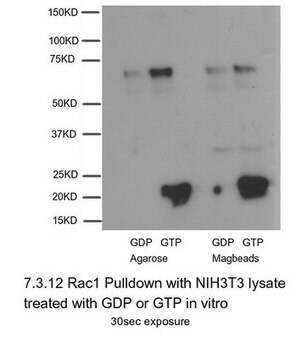202371
Poli(etilenoglicol)
average Mn 300, hydroxyl
Sinônimo(s):
PEG
About This Item
Produtos recomendados
Nome do produto
Poli(etilenoglicol), average Mn 300
Formulário
viscous liquid
peso molecular
Mn 285-315
average Mn 300
índice de refração
n20/D 1.463
pH
6-7 (23 °C, at 10 g/l)
viscosidade
5.8 cSt(210 °F)(lit.)
pf
−15-−8 °C (lit.)
densidade
1.125 g/mL at 25 °C
Mw/Mn
1.1 (typical)
Ω-final
hydroxyl
α-final
hydroxyl
cadeia de caracteres SMILES
C(CO)O
InChI
1S/C2H6O2/c3-1-2-4/h3-4H,1-2H2
chave InChI
LYCAIKOWRPUZTN-UHFFFAOYSA-N
Procurando produtos similares? Visita Guia de comparação de produtos
Categorias relacionadas
Descrição geral
Aplicação
- PEG modification increases thermostability and inhibitor resistance of Bst DNA polymerase.: This study demonstrates that polyethylene glycol (PEG) modification significantly enhances the thermostability and inhibitor resistance of Bst DNA polymerase, highlighting PEG′s potential in improving enzyme performance for biotechnological applications (Yang et al., 2024).
- Development of Lyophilized Eukaryotic Cell-Free Protein Expression System Based on Leishmania tarentolae.: The incorporation of PEG in the lyophilization process of a cell-free protein expression system demonstrates its role in enhancing the stability and efficiency of biotechnological workflows (Alfaro-Palma et al., 2024).
- A comprehensive review on singlet oxygen generation in nanomaterials and conjugated polymers for photodynamic therapy in the treatment of cancer.: This review highlights the application of PEGylated nanomaterials in photodynamic therapy, emphasizing its significance in improving biocompatibility and therapeutic efficacy in cancer treatments (Singh et al., 2024).
Código de classe de armazenamento
10 - Combustible liquids
Classe de risco de água (WGK)
WGK 1
Ponto de fulgor (°F)
428.0 °F - closed cup
Ponto de fulgor (°C)
220.00 °C - closed cup
Equipamento de proteção individual
Eyeshields, Gloves
Escolha uma das versões mais recentes:
Já possui este produto?
Encontre a documentação dos produtos que você adquiriu recentemente na biblioteca de documentos.
Os clientes também visualizaram
Artigos
Universal Platform for Surface Modification Employing Grafted Polymer Layers
Nossa equipe de cientistas tem experiência em todas as áreas de pesquisa, incluindo Life Sciences, ciência de materiais, síntese química, cromatografia, química analítica e muitas outras.
Entre em contato com a assistência técnica

